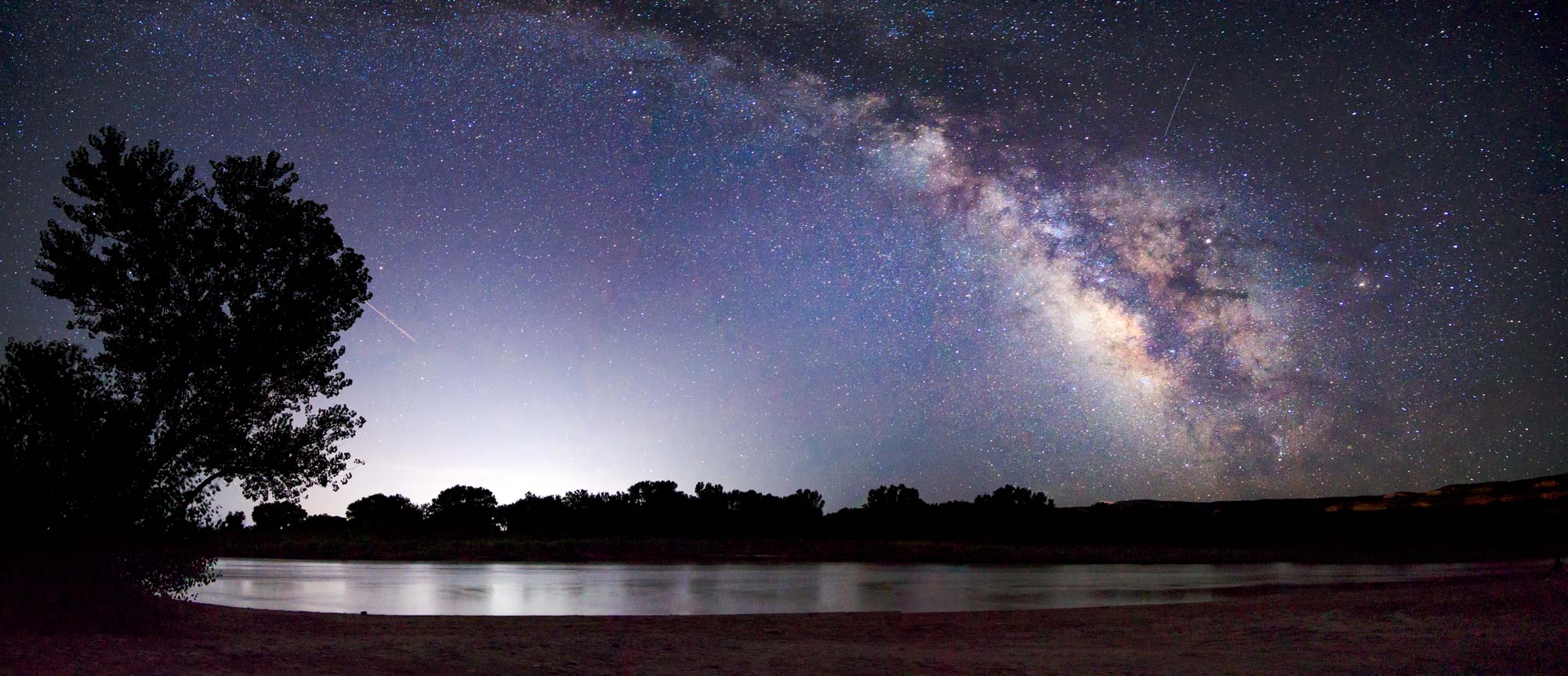
I still remember the first night I saw the Milky Way as a kid. I was lying on the blacktop tennis court my grandpa had built next to the grain bins on their Northern Illinois farm. My uncle pointed his arm to the heavens and traced out a line above the lightning bugs, and for the first time, I saw the faint, white glow of our galactic neighborhood.
Years later, when I got serious about photography, I started to think there was a chance I could do better than eek out a fuzzy rendition of our galaxy on a particularly dark night. I might be able to see our cosmic home for real.
Fast forward a few years, and I have worked the kinks out of a basic system that can get remarkable results from surprisingly cheap gear. To be sure, there are many, many people doing what I do better, sometimes with similar gear, but if you are just looking to get started, you may be surprised to find out how easy it is to actually take a picture of the Milky Way.
“So, Where is the Milky Way, Exactly?” Great question. The answer, of course, is “It depends.” Unlike the sun and moon, sorting out where the Milky Way is and when you can get a good shot at it can seem tricky at first. Thankfully, there is a quick and easy way to steepen that first bit of the learning curve.
The Tools You Need for Milky Way Photography
Sky Tracking Apps
Despite the strange name, The Photographers Ephemeris remains, for me, the gold standard in sky-tracking apps. This mobile product, and its desktop cousin, has been the definitive tool for helping me visualize the night sky. The great thing is, the app allows you to set a time in the future and dynamically scroll through time to plan for nights in the future before you ever leave the house.
If you are like me, you might balk at spending $10 for an app, but I can’t possibly tell you how worthwhile this investment is if you ever want to photograph the Milky Way or even nail a sunset or sunrise. Simply put, if you aren’t going to spend the cost of a burrito on this app or another one like PhotoPills, you might as well not read the rest of this post.
The Camera
This one is probably the easiest. If you own an interchangeable-lens digital camera that was made in the last five-ish years, then you have a 95% chance of owning something good enough to capture a solid starry sky. Sure, the grandest-shiniest new Sony A7 or Canon 5G is going to be amazing, but I have pulled good Milky Way shots out of laughably crappy gear.
I shoot Fuji these days, which are great for night photography (for a bunch of seriously nerdy reasons). A used X-T2, which is more than capable of shooting excellent night shots can be had for less than $500 used, which makes it a steal. As always, though, the cheapest camera is the one you already have, and if it can meet the ISO requirements laid out below, then you are good to go.
The Lens
This part is a little harder. Not every lens is going to take great shots of the Night Sky, and many that can are going to be such a pain in the butt you might not want to use them. If there is going to be a place you are likely to spend some coin, it is going to be your lens. While most people have a camera and a tripod that are plenty good enough for all kinds of photography, getting the right lens makes all the difference.
For my money, nothing beats a good, cheap manual prime lens (those with no autofocus and no zoom) for starting out in night sky photography. The reasons for this are numerous, and here are the most important
- Price - Manual lenses have less going on inside, don’t pass autofocus data to the camera and are consequently stupidly cheap by comparison.
- A Focusing Scale - Having the focus scale on the outside of your lens is invaluable in nailing infinity focus – the point where you are actually focused correctly so stars turn into sharp dots and not little blobs.
- Speed - Manual prime lenses can often have much larger apertures than zoom lenses of comparable price. This means you are letting a lot more light in, and this can be the make-or-break difference between getting the shot you want and a dim, noisy mess of muddy blackness.
The Rest
Honestly, knowing where the Milky Way is going to be, having a good camera, the right lens and even a basic tripod is about all the gear you need to get started chasing down the Milky Way. That said, you are probably going to want a few other things to make it easier.
- A good headlamp - While your phone has a flashlight, using it will ruin your night vision. Getting a headlamp or flashlight that has a dim, red LED will help keep your eyes adjusted to the darkness.
- Warm clothes - No doubt about it … you are goin to get cold shooting the stars. You may think you live in a warm area, and thankfully the Milk Way is most visible in the warmer months of the year in the Northern Hemisphere where most of humanity lives, but I can tell from experience, you are gonna get cold. Part of that is because of the last thing you will need …
- A lot of time - It takes longer than you think to get a good exposure of the Milky Way. You will be using longer exposure times, with each shot taking as much as 13-20 seconds. That doesn’t sound like much, but it adds up quickly. Each shot can take a minute or more to frame, shoot, examine and make adjustments. It is easier to spend an hour or more fussing about in the dark just trying to get that first clear, well-composed shot.
Stay Tuned …
That’s it for Part 1! In the second part of this tutorial, I will cover the basics of shutter speed, ISO and aperture needed to get a great shot of the stars. While it may seem like magic to see the Milky Way turn up on the screen on the back of your camera, it is really just some simple math (and finding a great location).
